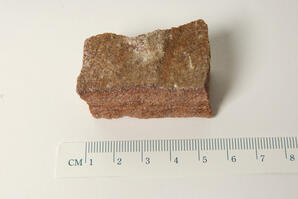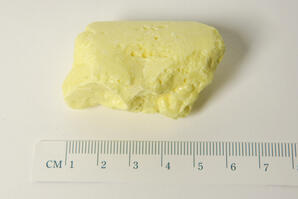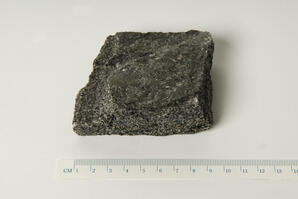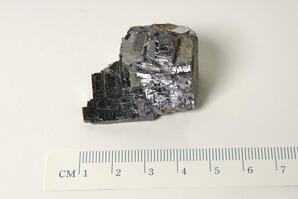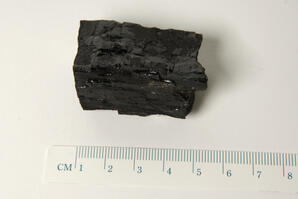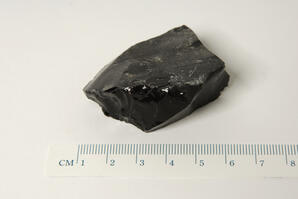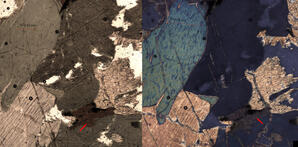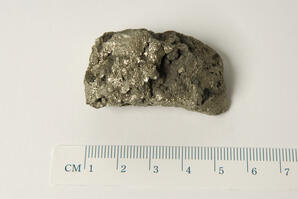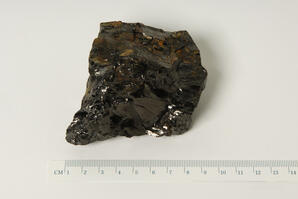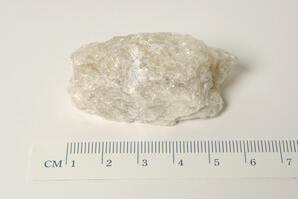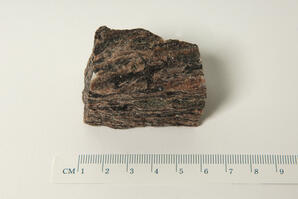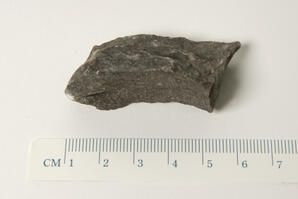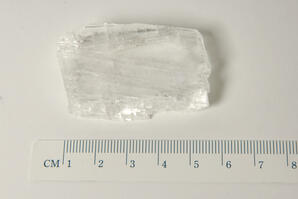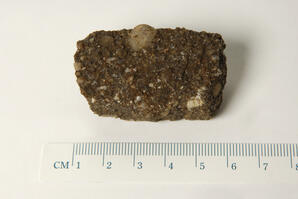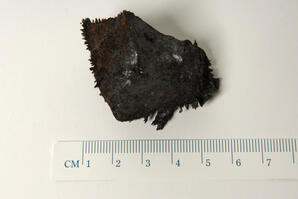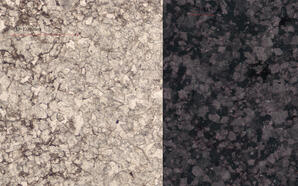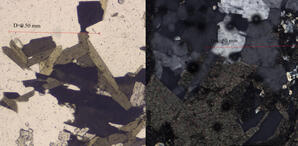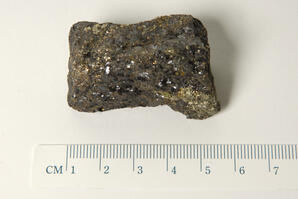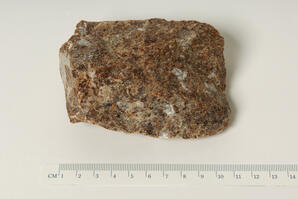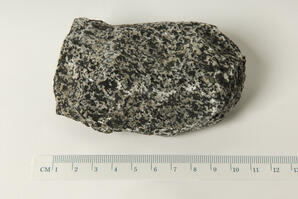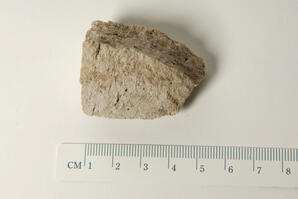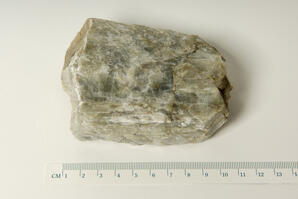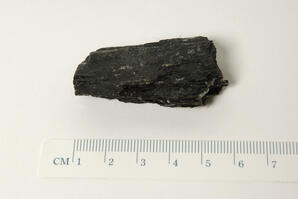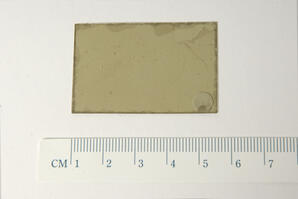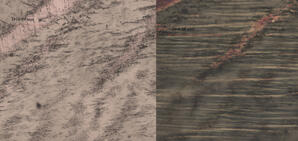Image
Texture (grain size, shape, sorting): Mostly sand (1/16 - 2mm grains). Composition (detrital, biochemical, chemical): Detrital sediment grains; derived from the mechanical and chemical weathering of continental rocks, which are comprised mostly of…
Image
Common Forms/Occurrences: Found near hot springs and volcanic regions Useful Identification Test: Identifiable odour when mixed with water (resembles rotton eggs) Chemical formula: S Crystal System: Transparent to translucent crystals or earthy…
Image
Mineralogical Composition: Visible sparkling crystals of platy minerals, bladed crystals, or prismatic crystals; breaks along scaly foliated surfaces Texture (grain size, shape, sorting): Medium to coarse grained; Folitated Metamorphic grade:…
Image
Common Forms/Occurrences: In veins associated with other sulfide minerals Useful Identification Test: Decomposed by H2SO4 and by dilute HNO3 Chemical formula: PbS Crystal System: Forms cubes and octahedrons Colour: Silvery gray Streak: Gray to dark…
Image
Texture (grain size, shape, sorting): Black, layered, brittle rock Composition (detrital, biochemical, chemical): Biochemical sediment grains; plant fragments and/or charcoal Other distinctive properties: May be sooty or bright Common depositional…
Image
Mineralogical Composition: Felsic, Intermediat, and Mafic; Muscovite, Quartz, Potassium Feldspar, Plagioclase Feldspar, Amphibole, Biotite; Olivine, Pyroxene Texture (extrusive/intrusive): Extrusive; Glassy Other distinctive properties: Dark green…
Image
Key Characteristics: Strong coloration and pleochroism, 2 intersecting cleavages, and diamond shaped basal sections are diagnostic 2V: 2Vx = 35 - 130° Relief: Moderate to high positive relief Cleavage: Two cleavages intersect at 56 ° and 124 °.…
Image
Common Forms/Occurrences: Found in hydrothermal deposits Useful Identification Test: Insoluble in HCl; When powdered soluble in strong HNO3 Chemical formula: FeS2 Crystal System: Cubes and octahedrons Colour: Brass yellow Streak: Dark gray Lustre:…
Image
Mineralogical Composition: Black glossy rock that breaks along uneven or conchoidal fractures Texture (grain size, shape, sorting): Fine grained; Nonfoliated Metamorphic grade: High Precursor rock: Peat, Lignite, Bituminous coal Commercial…
Image
Common Forms/Occurrences: Secondary mineral formed by alteration of magnesium silicates (ie. Olivine and pyroxene) Useful Identification Test: Very soft to the touch, soapy feel Chemical formula: Mg3Si4O10(OH)2 Crystal System: Cryptocrystalline…
Image
Mineralogical Composition: Visible crystals of two or more minerals in alternating light and dark foliated layers Texture (grain size, shape, sorting): Medium to coarse grained; Folitated Metamorphic grade: Intermediate Precursor rock: Mudstone,…
Image
Texture (grain size, shape, sorting): No visible grains; dark, very fine-grained rock, usually breaks with a conchoidal fracture Composition (detrital, biochemical, chemical): Biochemical sediment grains; shells and shell/coral fragments, and/or…
Image
Common Forms/Occurrences: Found in alabaster, satin spar, and selenite Useful Identification Test: Soft; Shows better cleavage than talc Chemical formula: CaSO4 ? 2H20 Crystal System: Tabular crystals, prisms, blades, or needles Colour: Colourless,…
Image
Texture (grain size, shape, sorting): Rounded gravel, poorly sorted grains larger than 2mm Composition (detrital, biochemical, chemical): Detrital sediment grains; Rock fragments and/or quartz grains and/or feldspar grains and/or clay minerals Other…
Image
Common Forms/Occurrences: Common constituent of Precambrian iron-formations Useful Identification Test: Attracted to a magnet and can be magnetized Chemical formula: Fe3O4 Crystal System: Octahedrons Colour: Silvery gray to black Streak: Dark gray…
Image
Key Characteristics: Relief which changes upon rotation of stage, extreme δ, rhombohedral cleavage and lamellar twinning are all diagnostic. Dolomite usually has higher refractive indices than calcite and may be colorless or iron stained where…
Image
Key Characteristics: Strong brown coloration and plechroism, birds eye and parallel extinction, and high birefringence are diagnostic 2V: 2Vx = 0 - 25° Relief: moderately high positive relief Cleavage: One perfect cleavage Colour and Plechroism:…
Image
Common Forms/Occurrences: Associated with galena and in hydrothermal veins in igneous rocks and contact metamorphic deposits Useful Identification Test: Soluble in HCl with evolution of H2S Chemical formula: ZnS Crystal System: Misshapen…
Image
Common Forms/Occurrences: Two groups classified as Pyralspite and Ugrandite Useful Identification Test: Soluble with difficulty in HF Chemical formula: complex silicate Crystal System: Dodecahedrons Colour: Usually red, black, or brown; sometimes…
Image
Mineralogical Composition: Intermediate; Quartz, Potassium Feldspar, Plagioclase Feldspar, Pyroxene, Amphibole, Biotite Texture (extrusive/intrusive): Intrusive; Phaneritic: coarse-grained Other distinctive properties: Dark gray; sold commercially…
Image
Mineralogical Composition: Felsic and Intermediate; Muscovite, Quartz, Potassium Feldspar, Plagioclase Feldspar, Pyroxene, Amphibole, Biotite Texture (extrusive/intrusive): Extrusive; Vesicular Other distinctive properties: White, yellowish, gray to…
Image
Common Forms/Occurrences: Igneous and metamorphic rocks Useful Identification Test: Lack of colour, low relief, and albite twinning Chemical formula: NaAlSi3O8 to CaAl2Si2O8 Crystal System: Striated tabular crystals or blades Colour: Colourless,…
Image
Mineralogical Composition: Mostly visible crystals of amphibole Texture (grain size, shape, sorting): Medium to coarse grained; Folitated or Nonfoliated Metamorphic grade: High Precursor rock: Basalt, Gabbro, or Ultramafic igneous rocks Commercial…
Image
Common Forms/Occurrences: Found in granites and pegmatites Useful Identification Test: Can be split into thin flexible transparent sheets Chemical formula: KAl2(Al,Si3O10)(OH,F)2 Crystal System: Short opaque prisms Colour: Colourless, yellow, brown…
Image
Key Characteristics: The mineral's low relief, lack of color and tartan twinning are characteristic. In plagioclase feldspar polysynthetic twinning in two directions can mimic microcline's tartan twinning. However, the polysynthetic…


